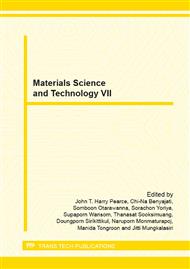p.148
p.153
p.158
p.163
p.173
p.177
p.182
p.188
p.193
Powder Injection Moulding of Alumina Using PEG/PVB Binder Systems
Abstract:
Powder injection moulding (PIM) is a process that is suitable for a fabrication of small and complex shape components. It consists of 4 main steps: feedstock preparation by mixing powder and binder, injection moulding of the prepared feedstock into the desired mould, removal of the binder and finally sintering to obtain materials with specific properties. In this study, powder injection moulding of alumina (Al2O3), using polyethylene glycol (PEG) based binder systems, was investigated. PEG is soluble in water; therefore, the use of organic solvents required for debinding of wax-based binder system can be avoided. PEG with a molecular weight of either 1500 or 4000 was used as a major constituent together with polyvinyl butyral (PVB) as a minor component. Stearic acid was also added during feedstock preparation to act as a lubricant. After mixing the powder with the binder, a variety of Al2O3 feedstocks were injected into the moulds. The mouldings were prepared by a laboratory-scaled plunger-typed machine. Debinding was carried out using a combination of solvent extraction and thermal debinding. Water leaching tests were performed at 30 and 50 °C to study PEGs removal rate. The pyrolysis of PVB was completed during ramping up of the mouldings to the sintering temperature. The mouldings were subjected to sintering at 1500 °C in air. It was found from the study that PEG/PVB binder systems can be used for the preparation of alumina powder injection moulding feedstocks. Specimens retained their shapes during and after leaching of the PEGs.
Info:
Periodical:
Pages:
173-176
Citation:
Online since:
March 2013
Price:
Сopyright:
© 2013 Trans Tech Publications Ltd. All Rights Reserved
Share:
Citation:


